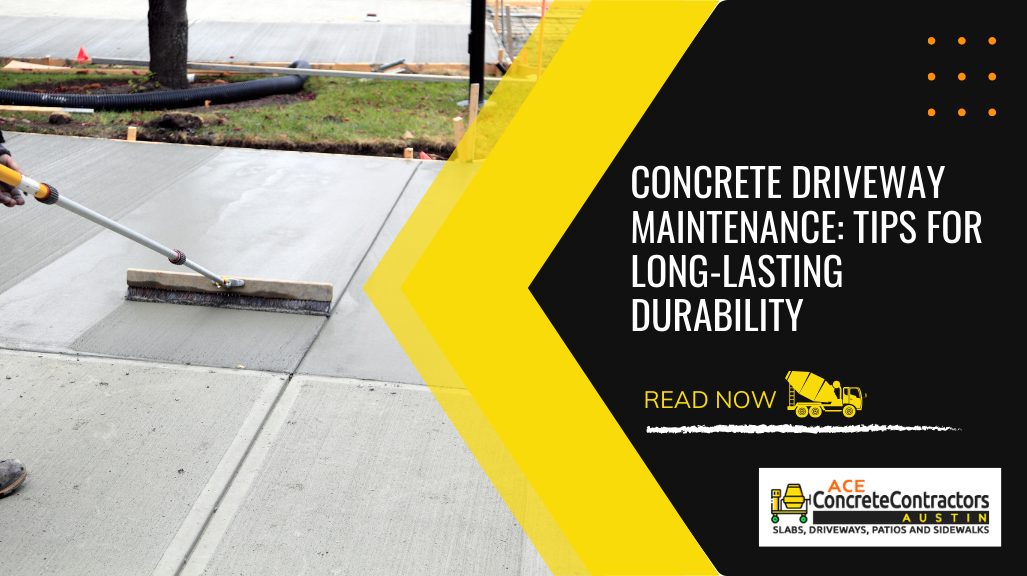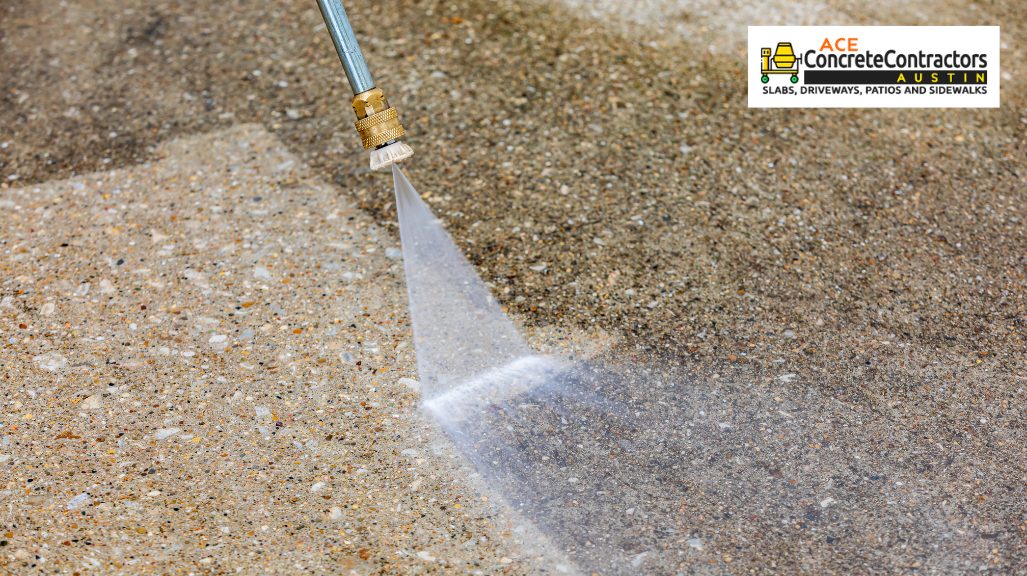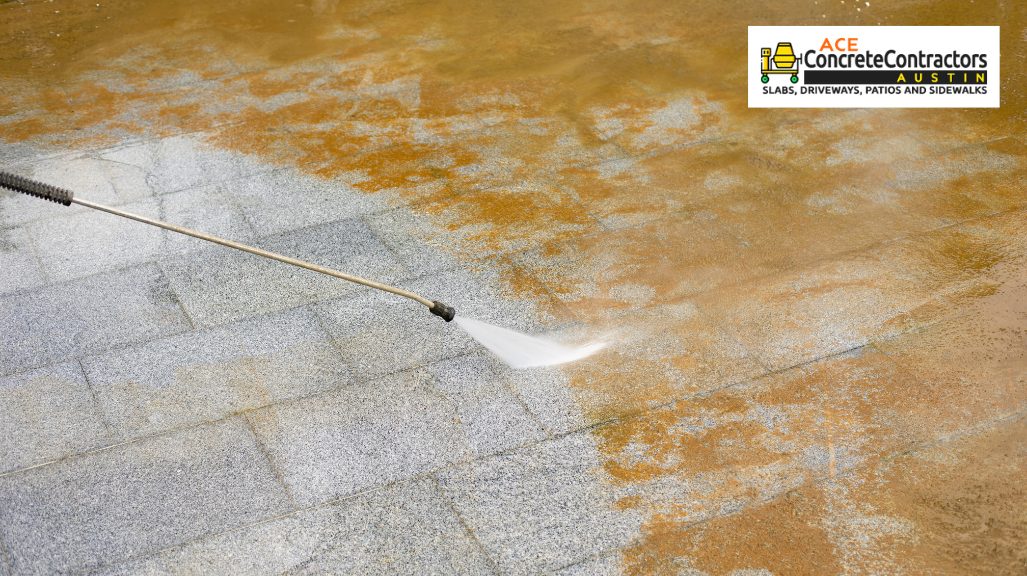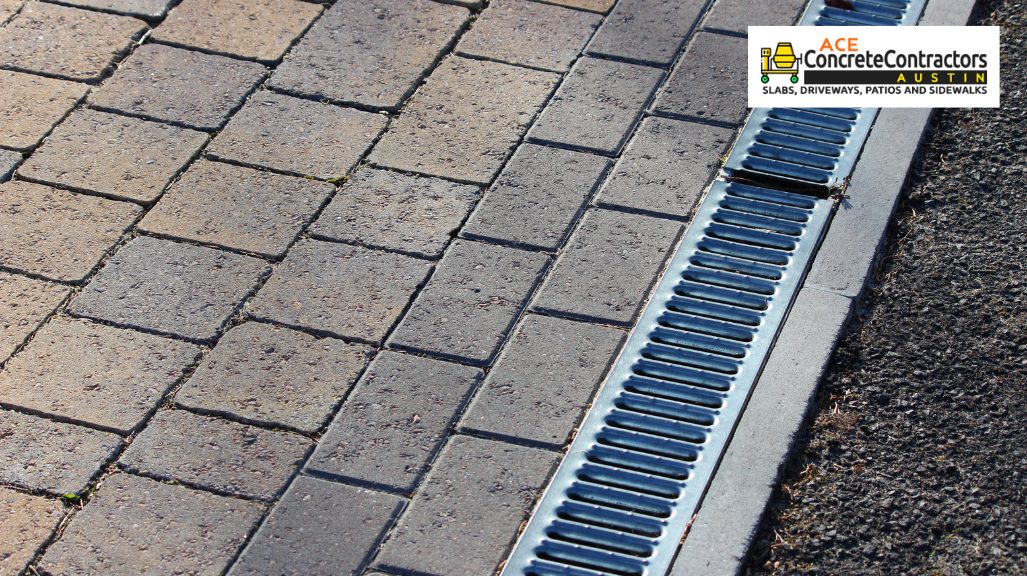
Table of Contents
Maintaining your concrete driveway guarantees its longevity and keeps it looking its best. Start by committing to regular cleaning with eco-friendly solutions, which help prevent unsightly stains and buildup. Remember that sealing the surface every few years is essential to protect against weathering. But that’s just the beginning. What about those inevitable cracks, and how do you handle heavy loads or winter conditions? By addressing these aspects with the help of a professional contractor, you’ll keep your driveway in top shape year-round. Let’s explore the steps that will make a noticeable difference in your driveway’s durability and appearance.
Key Takeaways
- Regularly clean with a pressure washer and eco-friendly cleaners to prevent the buildup of dirt and stains.
- Apply a high-quality outdoor sealant every 2-3 years to protect against weathering and stains.
- Inspect for cracks every six months and promptly repair them to prevent further deterioration.
- Remove organic debris and promptly clean spills to avoid decay-related stains and mold growth.
- Use thin, even coats of sealant and follow manufacturer instructions for optimal protection and durability.
Regular Cleaning

Regular cleaning is an essential step in maintaining your concrete driveway. Begin with pressure washing to remove built-up dirt, grime, and stains. Use a pressure washer with a minimum of 3000 PSI for effective cleaning. Confirm you hold the nozzle at a 45-degree angle and maintain a consistent distance of 12 inches from the surface to avoid damaging the concrete.
Opt for eco-friendly cleaners to maintain both your driveway and the environment. These biodegradable solutions break down oils and organic materials without leaving harmful chemical residues. Before applying the cleaner, thoroughly wet the driveway to prevent the solution from absorbing too quickly.
Apply the cleaner evenly, allowing it to sit for the recommended duration, usually 10-15 minutes. After soaking, use the pressure washer to rinse the cleaner off, working in systematic sections to confirm thorough coverage. For stubborn stains, scrub with a stiff-bristle brush before rinsing. Regularly inspect your driveway for any persistent spots and address them promptly to prevent permanent staining.
Sealing the Surface
To protect your concrete driveway, choose a high-quality sealant specifically designed for outdoor use. Apply the sealant evenly, following the manufacturer’s guidelines to guarantee maximum protection. Regularly inspect the surface and reapply the sealant to maintain its durability and appearance.
Choosing Quality Sealants
Why is selecting the proper sealant crucial for your concrete driveway? The correct sealant guarantees your driveway withstands weathering, resists stains, and maintains structural integrity. Different sealant types offer various levels of protection, so choosing the right one is critical. Acrylic sealants are popular because they are easy to apply and affordable. They also provide excellent UV protection and a glossy finish.
Epoxy sealants, on the other hand, offer superior durability and are ideal for high-traffic areas. They bond well with concrete and provide a robust, long-lasting barrier. If you’re looking for a more natural finish, consider penetrating sealants. These sealants seep into the concrete, protecting it without altering the surface’s appearance. Understanding application techniques also plays a crucial role in the effectiveness of your sealant. Confirm that the surface is clean and dry before applying any sealant.
Use a roller or sprayer for an even coat and avoid pooling, which can lead to an uneven finish. Properly applied sealant will extend the life of your driveway, making it resistant to cracking, spalling, and other forms of damage. Choose wisely, and you’ll enjoy a durable and attractive concrete driveway for years.
Application Best Practices
Having selected the appropriate sealant for your concrete driveway, the success of your maintenance project now depends on proper application. Start with thorough surface preparation. Clean the driveway meticulously, removing dirt, oil stains, and any existing sealant residue. Use a pressure washer for deep cleaning and let the surface dry thoroughly, as moisture can impede the sealant’s effectiveness.
Once the surface is prepped, focus on application techniques. Begin by reading the manufacturer’s instructions for your specific sealant. Pour the sealant into a paint tray for even distribution. Use a roller with a long handle for large areas to apply a thin, even coat. A brush can be used for edges and tight spots. Work in manageable sections to maintain a wet edge, prevent lap marks, and ensure uniform coverage.
Apply the sealant in parallel strokes, maintaining consistent pressure to avoid streaks. Two thin coats are generally more effective than one thick coat, allowing for better penetration and curing. Follow the manufacturer’s guidelines for sufficient drying time between coats. This systematic approach guarantees a durable, long-lasting seal, protecting your driveway from weather and wear.
Maintenance and Reapplication
Once your concrete driveway is sealed, keeping it in top condition requires regular maintenance and timely reapplication. Inspect the surface every six months for cracks or chips that might need repair. Addressing these issues promptly will prevent further deterioration and guarantee that the sealant continues to protect effectively. Consider reapplying a quality sealer every 2-3 years for color enhancement. This refreshes the appearance and reinforces the protective layer against UV rays, water, and stains.
When choosing a sealer, choose one compatible with your existing product to avoid adverse reactions. Clean the driveway thoroughly before application, removing any dirt, oil, or previous sealer residues. Use a sprayer or roller for even application, guaranteeing complete coverage. Pay attention to the weather conditions; apply the sealer on a dry, mild day for proper curing. After application, avoid using the driveway for at least 24-48 hours to guarantee the sealer sets correctly.
Addressing Cracks
If not addressed promptly, cracks in your concrete driveway can quickly escalate from minor annoyances to significant structural issues. Start by performing a thorough surface inspection to identify all visible cracks. Look closely for hairline fractures and more significant gaps. Once identified, proceed with crack repair to prevent further damage. For small cracks, use a concrete crack filler or a patching compound. Clean the crack thoroughly, removing debris or loose concrete to guarantee proper adhesion. Apply the filler using a caulking gun or trowel, then smooth it to level with the surrounding surface. Allow it to cure as per the manufacturer’s instructions.
For larger cracks, consider using a more robust concrete patching mix. Prepare the area by chiseling the crack to remove weak edges and create a uniform groove. Fill the groove with the patching mix, packing it tightly to avoid air pockets. Smooth the surface and let it cure. Remember to seal the repaired areas to protect against future damage. Regular surface inspections and timely crack repairs will extend the lifespan of your driveway, maintaining its structural integrity and aesthetic appeal.
Read On: What is Stamped Concrete Patio
Stain Removal

First, identify common stains like oil, rust, and mildew to tackle stain removal on your concrete driveway. Use effective cleaning solutions such as degreasers for oil, oxalic acid for rust, and bleach for mildew. Regularly applying a concrete sealant can help prevent future stains and make maintenance easier.
Common Stain Types
Regarding your concrete driveway, the most common stains—such as oil, grease, rust, and organic matter like leaves—require targeted removal techniques to maintain their pristine appearance. Understanding the types of stains you’re dealing with is crucial for effective maintenance.
- Oil Stains and Grease: These often come from vehicles and can seep deep into the concrete. They not only create unsightly marks but can also make the surface slippery. Addressing oil stains quickly prevents long-term damage.
- Rust Marks and Chemical Residues can result from metal objects left on the driveway or from using de-icing chemicals during winter. Rust marks are particularly stubborn and may need specialized treatments to remove altogether.
- Organic Stains and Mold Growth: Leaves, grass clippings, and other organic matter can stain the surface, primarily when they decay. Mold growth is another concern, particularly in shaded or damp areas, and it can lead to slippery and hazardous conditions.
Other common issues include tire tracks, food spills, paint splatters, and weather effects. Each of these requires a specific approach to guarantee your driveway remains clean and durable.
Effective Cleaning Solutions
Maintaining your concrete driveway‘s pristine condition requires the proper cleaning solutions tailored to specific stains. For oil and grease stains, consider using eco-friendly cleaners, which aren’t only effective and safe for the environment.
Apply the cleaner directly to the stain, using a stiff brush to scrub the area thoroughly. Rinse with water to remove any residue. A pressure washer can be a game-changer for avoiding damaging the concrete surface. It can also be a game-changer for more stubborn stains, such as rust or paint. Begin by setting the pressure washer to a medium setting.
Hold the nozzle at a 45-degree angle and maintain a consistent distance of about 12 inches from the surface. This technique guarantees effective stain removal without harming the concrete. A mixture of baking soda and water can address minor stains if you prefer a more natural approach. Apply the paste to the stain, let it sit for a few minutes, then scrub with a brush before rinsing.
Preventative Measures
Prevention is the cornerstone of stain management for your concrete driveway. By implementing a few preventative measures, you can maintain surface protection and guarantee that your driveway remains free from unsightly stains, even during temperature fluctuations. First, apply a high-quality concrete sealer. Sealers act as a barrier, preventing oil, grease, and other substances from penetrating the surface. Depending on the exposure to harsh weather conditions, reapply the sealer every 1-3 years.
Second, promptly clean up spills. Quick action prevents substances from soaking into the concrete. Use absorbent materials like cat litter or sawdust to soak up fresh spills before they can cause permanent staining. Third, consider placing mats or rugs in high-risk areas. These can be particularly useful in locations where vehicles are parked, or maintenance activities occur. Mats offer an additional layer of surface protection that can be easily cleaned or replaced.
Proper Drainage

Proper drainage is essential to the longevity of your concrete driveway. Without an effective drainage system, water can accumulate and cause cracks, erosion, and other damage over time. Start by guaranteeing your driveway has adequate surface grading. This means the concrete should slope away from your home and other structures, directing water to appropriate drainage points.
You’ll also want to incorporate drainage systems to handle runoff efficiently. Installing French or trench drains along the edges of your driveway can effectively manage water flow. These systems capture and redirect water away from your driveway, preventing pooling and minimizing freeze-thaw cycles that can lead to cracks. Regularly inspect your drainage systems for blockages or damage. Clear any debris to guarantee water flows freely. If you notice standing water after rain, it’s a sign that your surface grading might need adjustment or your drainage systems require maintenance.
Avoiding Heavy Loads
Distributing weight evenly across your concrete driveway is essential for preventing damage caused by heavy loads. Uneven weight distribution can lead to cracks, surface wear, and structural weakening. Understanding load distribution and adhering to weight limits is vital to maintaining your driveway’s integrity. First, always be mindful of the weight limits that your driveway can handle. Most residential driveways are designed for standard vehicle loads, not heavy trucks or construction equipment. Consistently parking heavy vehicles can cause significant damage over time.
To prevent damage, follow these practical steps:
- Avoid Concentrated Loads: Don’t repeatedly park heavy vehicles in the same spot. Move them around or use different driveway sections to distribute the weight evenly.
- Use Reinforced Sections: If you must accommodate heavy loads, consider reinforcing sections of your driveway with thicker concrete or additional support materials.
- Regular Inspections: Periodically check your driveway for signs of stress or damage. Early detection of cracks or wear can prevent more extensive repairs later.
Winter Care

Winter presents unique challenges for maintaining your concrete driveway, just as weight management does throughout the year. Snow removal is the first critical step. To avoid surface damage, use a plastic shovel instead of a metal one. For larger areas, consider a snow blower with rubber blades. Avoid using rock salt, as its chemical reactions can deteriorate the concrete. Opt for calcium chloride or magnesium chloride-based deicers instead.
Ice prevention is equally important. Applying a concrete sealant in the fall creates a protective barrier, reducing water absorption and freezing damage. Sand can provide traction without harming the concrete. If ice forms, avoid chipping it away with metal tools, which can cause surface cracks. Instead, use a safe deicer and let it work before you remove the ice. Regularly inspect your driveway for cracks and address them immediately. Water can seep into small fissures, freeze, and expand, worsening the damage.
Keeping your driveway clear of snow and ice and using appropriate deicing methods guarantees it remains in prime condition throughout the winter, extending its life and maintaining its appearance.
Conclusion
You’ve learned how to keep your concrete driveway in top shape. Remember, a well-maintained driveway can last up to 30 years, compared to just ten years for neglected ones. Regular cleaning, timely sealing, and crack repairs aren’t just chores—they’re investments. Implement proper drainage and avoid overloading to protect your driveway’s integrity. Following these practical tips guarantees that your driveway remains durable and visually appealing for decades. Don’t wait; start your maintenance routine today!
